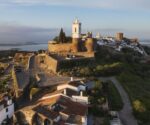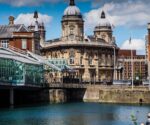I visited the frozen in time village full of independent shops | Travel News | Travel
When you think of the Scottish west coast, your mind is probably more likely to jump to midges, sheets of rain, and breathtaking mountain vistas than palm trees.
Yet there is a small fishing village tucked not too far inland from the bridge to Skye, which shares this striking feature with the significantly more sun-drenched likes of Miami Beach. Plockton may have three times fewer average sunshine hours than the Floridian seaside settlement over the pond and be blessed with significantly fewer tourists, but it does have this in common.
Since the 1960s a row of New Zealand cabbage palm trees have dominated the central Harbour Street of the town as it runs along the banks of Loch Carron. James Nicholson in Beyond the Great Glen describes Plockton as having a “sub-tropical appearance” as a result.
It has also been called “arguably the prettiest village in the Highlands” by travel writer Barry Shelby, who clearly saw the same thing as the location scouts for TV series such as Hamish Macbeth and film The Wicker Man.
I was similarly bowled over by the beauty of the village when I travelled there. The sub-tropical feel of the place is not overblown by travel writers and reviewers of Plockton. It may not be as warm as other palm-tree-lined places such as Torquay or, further afield, France or Greece, but the look is very pleasing.
But it wasn’t the palm trees that had me falling head-over-heels for Plockton. It was the feel of the place.
There is a tight-knit community at the heart of Plockton, which is home to just a few hundred people. Its position at the end of the Kyle of Lochalsh Line, which weaves through valleys, around mountains and alongside lochs, gives the feeling that you’re at the end of the country and like you’ve stepped back in time. It is a final, friendly stop, filled with independent businesses and people deeply involved and committed to the place.
A few other things have conspired to make the village so lovely. One is the warming North Atlantic Drift and the relatively sheltered bay Plockton sits in, rendering its climate palm tree-friendly and surprisingly balmy for its northerly location.
Another was the arrival of a local laird who transformed the community into a prosperous fishery and then decided to funnel much of the profits into upgrading the village in a planned style which still feels both neat and quaint to this day.
More recently, the huge success of the Kishorn Yard oil rig construction site a few miles from the village in the 1970s and 80s saw 3,000 well-paid workers descend on the area, funnelling cash into the region.
Today, tourism is the industry keeping Plockton going. Like many before us, I enjoyed an ice cream from Meghan’s as I walked along the promenade before stopping for a portion of chips at the Harbour Fish Bar. This was all washed down with a pint of local ale in the seafront garden of the Plockton Inn.
A simple but perfect day out, topped off by a trip around the harbour courtesy of the village’s most famous modern son Callum Mackenzie, who has taken a number of television crews around Loch Carron in his River Thames Police launch to observe the plentiful seals which lollop there. Idyllic.
Booking it
The Plockton Inn has rooms from £161. A little further afield, the Lochalsh Hotel (rooms from £225 per night, based on two sharing.)
The price of a return ticket from Inverness to Kyle of Lochalsh is £45.00 for an adult off-peak day return. Up to four children can travel for just £1 return each with an adult. The journey time from Inverness to the Kyle of Lochalsh is approximately 2 hours 40 minutes, and a little less to Plockton.








